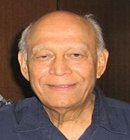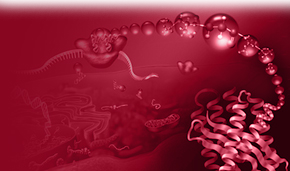|
|

|
|
Science Sparks @ ACTREC
|
 23 August 2021 23 August 2021
|
Vol. No. 10; Issue No. 489 |
|
|
Publications
|
|
1. Bhat V, Chavan P, Khattry N, Gupta S (2021). Dynamics of viral RNA load, virus culture, seroconversion & infectivity in COVID-19 patients: Implications on isolation policy. Indian Journal of Medical Research.
2. Nadkarni AR, Vijayakumaran SC, Gupta S, Divatia JV. Mortality in cancer patients with COVID-19 who are admitted to an ICU or who have severe COVID-19: A systematic review and meta-analysis. JCO Global Oncology. 7:1286-1305.
3. Nautiyal A, Jha AK, Mithun S, Shetye B, Kameswaran M, Shah S, Rangarajan V, Gupta S (2021). Analysis of absorbed dose in radioimmunotherapy with 177Lu-trastuzumab using two different imaging scenarios: A pilot study. Nuclear Medicine Communications.
4. Bal M, Sharma A, Rane SU, Mittal N, Chaukar D, Prabhash K, Patil A (2021). Neuroendocrine neoplasms of the larynx: A clinicopathologic analysis of 27 neuroendocrine tumors and neuroendocrine carcinomas. Head and Neck Pathology.
5. Talukdar R, Epari S, Sahay A, Choudhari A, Dasgupta A, Chatterjee A, Gupta T (2021). Endolymphatic sac tumor: single-institution series of seven cases with updated review of literature . European Archives of Oto-Rhino-Laryngology
5. Kunder S, Chatterjee A, Manna S, Mahimkar M, Patil A, Rangarajan V, Budrukkar A, Agarwal J, Gupta T (2021). Correlation between imaging and tissue biomarkers of hypoxia in squamous cell cancer of the head and neck. World Journal of Nuclear Medidicine.
6. Gandhi V, Gandhi K, Kumbhare L, Goda J, Gota V, Priyadarsini K, Kunwar A (2021). 3,3′-diselenodipropionic acid (DSePA) induces reductive stress in A549 cells triggering p53-independent apoptosis: A novel mechanism for diselenides. Free Radical Biology and Medicine.
|
|
|
|
|
Interesting Reads
|
|
Baek SK, Shin SW, Koh SJ, Kim JH, Kim HJ, Shim BY, Kang SY, Bae SB, Yun HJ, Sym SJ, Han HS, Gil HY. Significance of descriptive symptoms and signs and clinical parameters as predictors of neuropathic cancer pain. PLoS One. 16(8): e0252781, 2021.
|
|
|
Legends of Science
|

|
Balawant Shankar Joshi
Balawant Shankar Joshi obtained his PhD degree from the Institute of Chemical Technology, Mumbai. He was awarded second PhD from the Cambridge University, Cambridge. He worked on aphid pigment -protoaphin, chrysoaphin and erythroaphin. He studied the reactions of 2,6-ditert-butyl phenol which led to the isolation of the stable free radical galvinoxyl (Gox). His studies with curcumin showed that Gox molecule has a high steric hindrance that prevent chemical reactions with curcumin. He collected over 1000 plant species and investigated their chemical and biological constituents. The study of phenoilc constituents of Semecarpus anacardium led to interesting findings including Anticancer property of the plant. He isolated more than 80 new naturally occurring compounds, determined their structures and synthesized several natural products. Dr. Joshi was Member of the Executive Council of the Maharashtra Academy of Sciences (1979), member of the National Committee for IUPAC. He played a significant role in the Indo-Soviet scientific exchange programme.
|
|
| |

|
Sarvagya Singh Katiyar
Sarvagya Singh Katiyar obtained his PhD in 1962 from National Sugar Institute, Kanpur. He did his post doctoral research at University of Wisconsin-Madison where he was successful in determining the kinetic mechanism of the enzyme fatty acid synthetase complex. He did extensive research on enzymes and their architecture which helped in understanding the catalytic domain of kinases and dehydrogenases. Dr. Katiyar was vice chancellor of Kanpur University. He was an elected fellow of The world Academy of Sciences, National Academy of Sciences, New York Academy of Sciences. He was the recipient of Padma Shri award in 2003, Gold medal for Excellence in Science in 2006, and Padma Bhushan in 2009.
|
|
| |
|
|
Do You Know?
In 1996, human-associated microbiota was characterized using sequencing-based methods. The study analyzed the diversity of cultivated and noncultivated bacteria within a human faecal sample using 16S ribosomal RNA sequencing.
|

|
|
|
Cancer News
|
| |
|
|
| |
|
|
|
Researcher’s bioprint an entire active glioblastoma tumor using a 3D printer
|
|
18 August 2021, ScienceDaily
|
|
The 3D print of glioblastoma, the deadliest type of brain cancer is printed from human glioblastoma tissues containing all components of the malignant tumor. Researchers say the breakthrough will enable much faster prediction of best treatments for patients, accelerate the development of new drugs and discovery of new druggable targets…
|
|
|
|
|
| |
|
|
|
|
© 2021 Advanced Centre for Treatment, Research and Education in Cancer (ACTREC)
|
|
